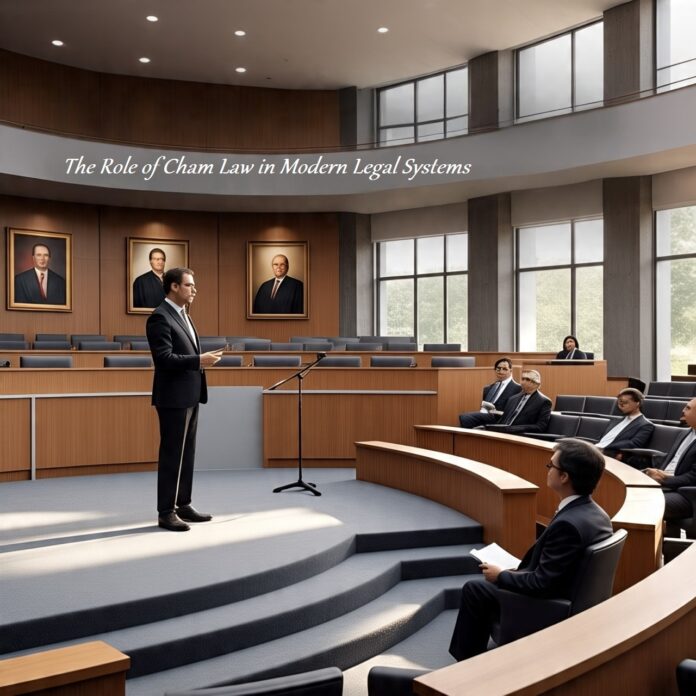Introduction
Every countries court system grows out of its own history, customs, and written rules. One smaller, yet interesting, system is **Cham Law**, born among the Cham community in Southeast Asia. Though it does not claim the spotlight like common or civil law, Cham Law still leaves its mark on courts in Vietnam, Cambodia, and parts of Malaysia.
In this article, we look at how Cham Law fits into todays world. We trace where it came from, pull out its main ideas, show how people use it today, note the bumps in the road, and guess where it might go. At the end, we answer some FAQs to clear up questions readers often bring up.
Historical Background of Cham Law
The Cham, heirs to the old Champa Kingdom (2nd-19th century), built a court code blended with Hindu, Islamic, and home-grown rules. After Champas fall, scattered groups carried that code with them across the region.
Key Historical Influences
- Hindu-Buddhist Legacy: Early Cham Law borrowed from the Dharmashastra, the Hindu rule book, and from local village councils.
- Islamic Integration: Between the 15th and 17th centuries, as many Chams turned to Islam, Sharia ideas flowed into their custom.
- Colonial Impact: When the French arrived, they mixed in bits of civil law, leaving a system that was part old and part new.
This rich mash-up shows Cham Law at its heart is a true case of legal blending.
Core Principles of Cham Law
Cham law is the set of rules that the Cham people across Southeast Asia live by. Its biggest features are:
1. Community-Based Justice
When a problem comes up, village elders or local religious leaders step in, not judges in big-city courts. Their goal is to fix the broken relationship and heal the hurt, so peace can come back to the whole community.
2. Blend of Religious and Customary Norms
Islam guides many family choices, like marriage and inheritance, but older animist and Hindu ideas still shape how land is shared and how ceremonies are done.
3. Oral and Written Traditions
After Islam reached the Cham, some rules were written down, yet many still travel the generations mouth-to-mouth. This mix keeps the law fresh and local, but it makes it hard for outsiders to measure it the same way everywhere.
Cham Law in Modern Legal Systems
Even though they are a small group, Cham law still finds space in the bigger national systems of the countries where the Cham now live.
A. Family and Personal Law
In Vietnam and Cambodia Cham Muslims mostly stick to Islamic rules for marriage, divorce, and what is passed on to children, even when those rules bump into state laws. Some governments take a lighter touch, letting minority groups handle personal matters their own way.
B. Land and Property Rights
Because land is split by clan lineages, the old Cham way sometimes rubs against the paperwork a state wants. In Malaysia some communities still reach for adat, or local custom, when property arguments come up.
C. Dispute Resolution
By calling the elders to settle fights, villages keep small troubles out of crowded courtrooms, saving time and energy for the state and for themselves.
Countries such as Cambodia respect alternative dispute resolution influenced by old Cham traditions.
Challenges in Integrating Cham Law
Cham Law now meets several modern roadblocks:
A. Conflict with National Laws
- Gender fairness: Some Cham customs, like rules on inheritance, still short-change women.
- State vs. local power: Governments usually favor a single and wide-reaching legal system.
B. Lack of Formal Codification
- Oral passing makes it hard to pin down a uniform code.
- Many young people lean toward written law instead of blending in old ways.
C. Globalization and Legal Homogenization
- Fast-evolving economies often push local rules to the back.
- Moving to cities slowly unravels community-based courts.
The Future of Cham Law
To stay alive, Cham Law must change yet keep its heart:
A. Legal Recognition and Hybrid Systems
- Official status for family matters, similar to Indias Muslim Personal Law.
- Mixed courts with state judges and Cham elders could stitch the two worlds.
B. Documentation and Education
- Putting customs in writing stops slow fade.
- Legal-teaching programs boost know-how in Cham areas.
C. International Indigenous Rights Protections
Groups may lean on UNDRIP rules to gain stronger backup.
Conclusion
Cham Law sits at the crossroads of old customs, faith, and modern life. By focusing on the community and cultural pride, it teaches larger, mixed societies how law can work with people. If its traditions are kept while subtle updates are made, Cham Law could keep adding fresh value to today’s justice systems.
FAQs About Cham Law
1. What is Cham Law?
Cham Law is the day-to-day legal code used by the Cham people, mixing Hindu, Islamic, and native beliefs. It covers marriage, land issues, and settling arguments inside Cham villages.
2. Where is Cham Law practiced today?
Most Cham Muslims in Vietnam, Cambodia, and Malaysia still turn to it, especially in coastal settlements.
3. How does Cham Law differ from Sharia Law?
Both draw from Islam, but Cham Law weaves in Hindu stories and animist ideas, giving it a wider, blended feel.
4. Does Cham Law conflict with national legal systems?
Often, yes, on matters like women’s rights and land claims. Some states let local laws run side-by-side, while others insist on one rule for all.
5. Is Cham Law officially recognized by governments?
In spots like Cambodia it is, since the state lets Cham Muslims follow Islamic family rules. Still, full approval remains the exception, not the rule.
6. Can Cham Law adapt to modern legal systems?
Definitely; writing it down, setting up mixed courts, and using global Indigenous treaties can help it fit today.
7. Why is Cham Law Important Today?
Cham Law helps keep the Cham peoples distinct culture alive and gives them friendly ways to settle problems without fighting or going to court.


